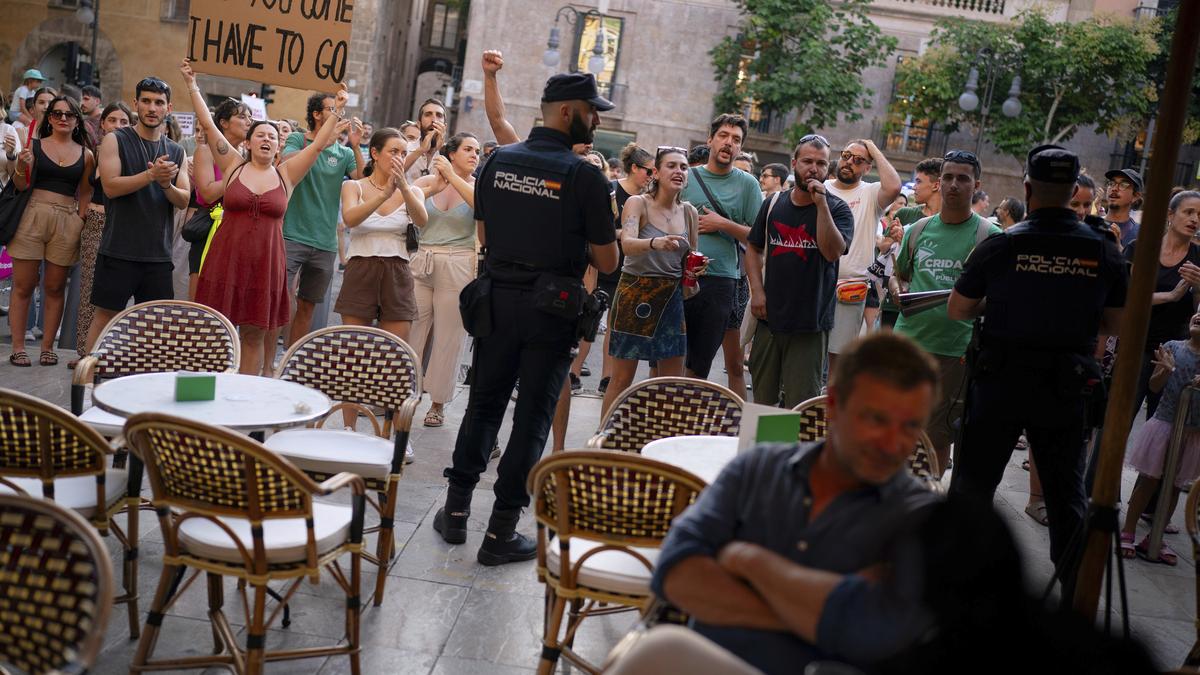Last month, residents across southern Europe, particularly in Spain, Italy, and Portugal, protested against “overtourism”. They held placards that read ‘tourists go home’, ‘your holidays, my misery’, and ‘mass tourism kills the city’, making clear their disapproval of unregulated tourism. This month, hoteliers in Mallorca, Spain hit back by putting up posters welcoming tourists.
This is not just cultural tension; it is rooted in structural issues. Data shows that tourism, when unregulated, reshapes housing markets in those cities, prices out residents, and creates jobs that offer little security.

The COVID-19 pandemic caused a dip in the contribution of tourism to the GDP of all countries. But by 2022, the sector rebounded rapidly. In general, in Italy, Portugal and Spain, tourism contributes close to 6% or more of the countries’ GDP, which makes it a significant source of revenue. In comparison, tourism contributes to only 2% of India’s GDP. The chart shows contribution of tourism to the GDP in select European countries.
While tourism is a money-spinner, increasing dependency on the sector puts those who govern these hotspots in a dilemma — should they prioritise tourists over their residents economically, spatially, and socially?
The European Union’s Harmonised Index of Consumer Prices (HICP) — an inflation measure which excludes home ownership and renovation costs — hovered at less than 2% from 2015 to 2020, only to increase to 8% in 2022. In contrast, the Owner-Occupied Housing Price Index (OOHPI) — an inflation measure which includes buying, renovating, and owning a home — was already hovering around the 3-4% mark from 2015 to 2020, only to spike to 11% in 2022. Similarly, the Housing Price Index (HPI), an inflation measure which tracks how prices in the housing market change, also surged beyond the 10% mark in 2022. The chart shows the European Union’s Harmonised Index of Consumer Prices (HICP), Owner-Occupied Housing Price Index (OOHPI) and Housing Price Index (HPI) — all measures of inflation — for the 2011 to 2022 period
Put simply, housing costs rose much faster than overall consumer prices. For residents, it has become more expensive to live in these cities than it is for the tourists to come and stay in them temporarily.
The protests against tourists are most pronounced in Spain, Italy, and Portugal, which together account for over 45% of all tourism-related accommodations in the EU in 2023. These three nations also hosted 33% of all the hotel beds in the EU. The chart shows Italy, Portugal and Spain’s share in the EU’s tourism-related accommodations, hotel beds and tourist nights spent (2023)
The vast scale of tourist accommodations in southern Europe highlights how deeply the economy is being shaped around tourists. As per Eurostat, in 2022, tourists spent nearly 450 million nights in Italy and 485 million in Spain. Meanwhile, Portugal, which has a population of 10 million and just over 8,000 tourism-related establishments, hosted nearly 85 million overnight stays. The term ‘tourism night’ is a metric commonly used to measure the volume of tourist activity.
The latest Eurostat report shows that most tourist spending comes from overnight visitors — 93% in Italy, 97% in Portugal, and 89% in Belgium as opposed to just 30% in Luxembourg. The chart shows the inbound tourism expenditure, tourists who stay overnight and the same-day visitors (%) for select countries in the EU, for the year 2022
As a result of this pattern of overnight tourism, homes are turned into “stays”, thus causing greater pressure on the housing markets and other long-term spatial strains.
Of all tourism-related businesses in the EU, 37% are in Spain, Italy, and Portugal. The chart shows Italy, Portugal and Spain’s share in the EU’s tourism-related businesses (2022)
This uneven concentration positions these nations not merely as travel destinations, but also as key pillars of Europe’s tourism economy. However, locals in these countries are shouldering the hidden costs of a sector that, though profitable, impacts their lives. Tourism, for them, has also become a driver of inequality.
The data for the charts were sourced from Eurostat, the statistical office of the European Union and Our World In Data. Latest available data was taken for all the charts
Niranjana V B is interning with The Hindu Data Team
Published – July 17, 2025 08:00 am IST
